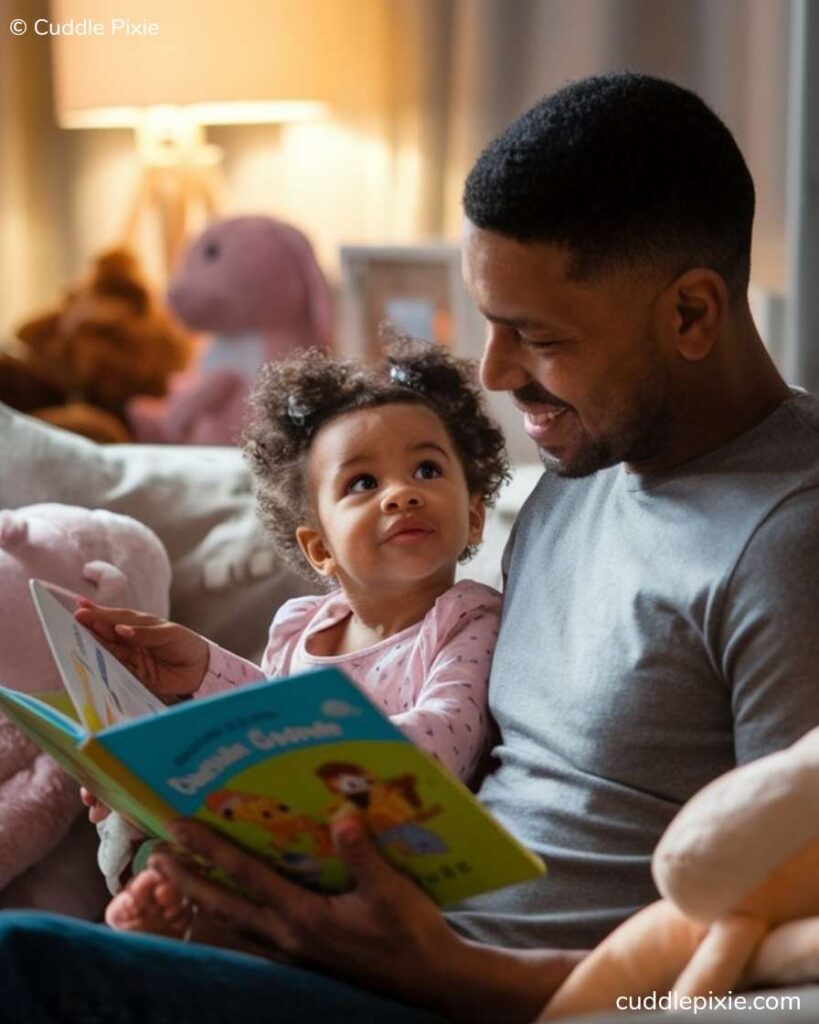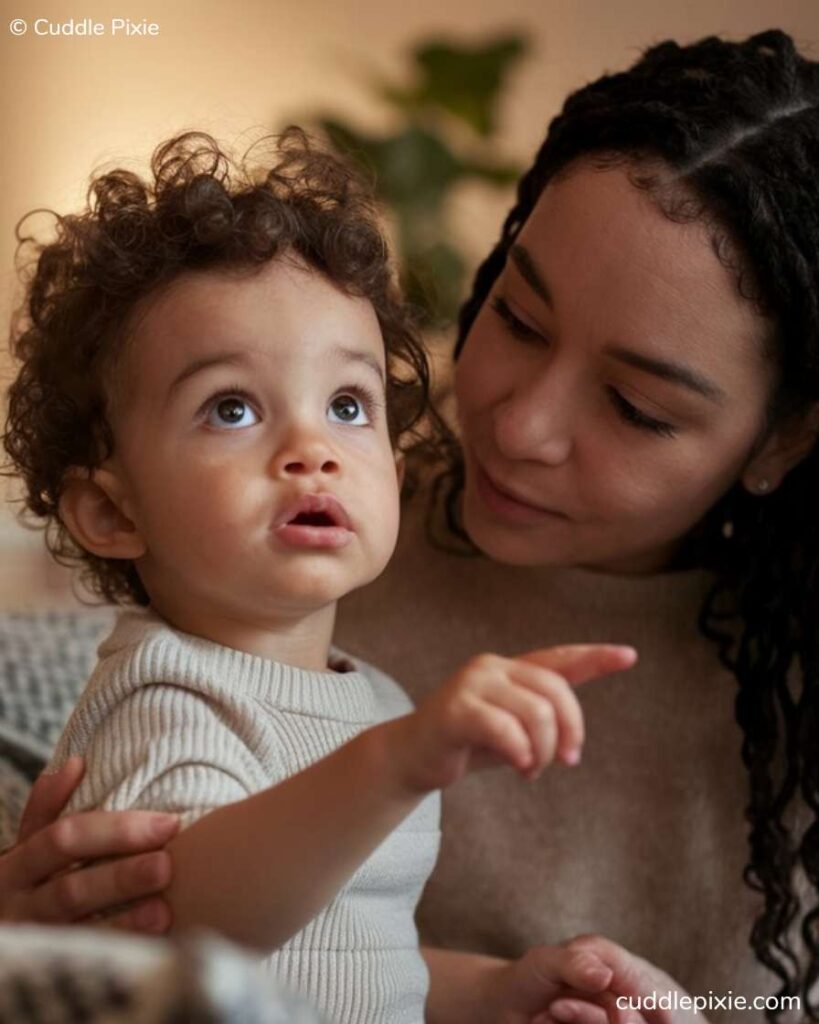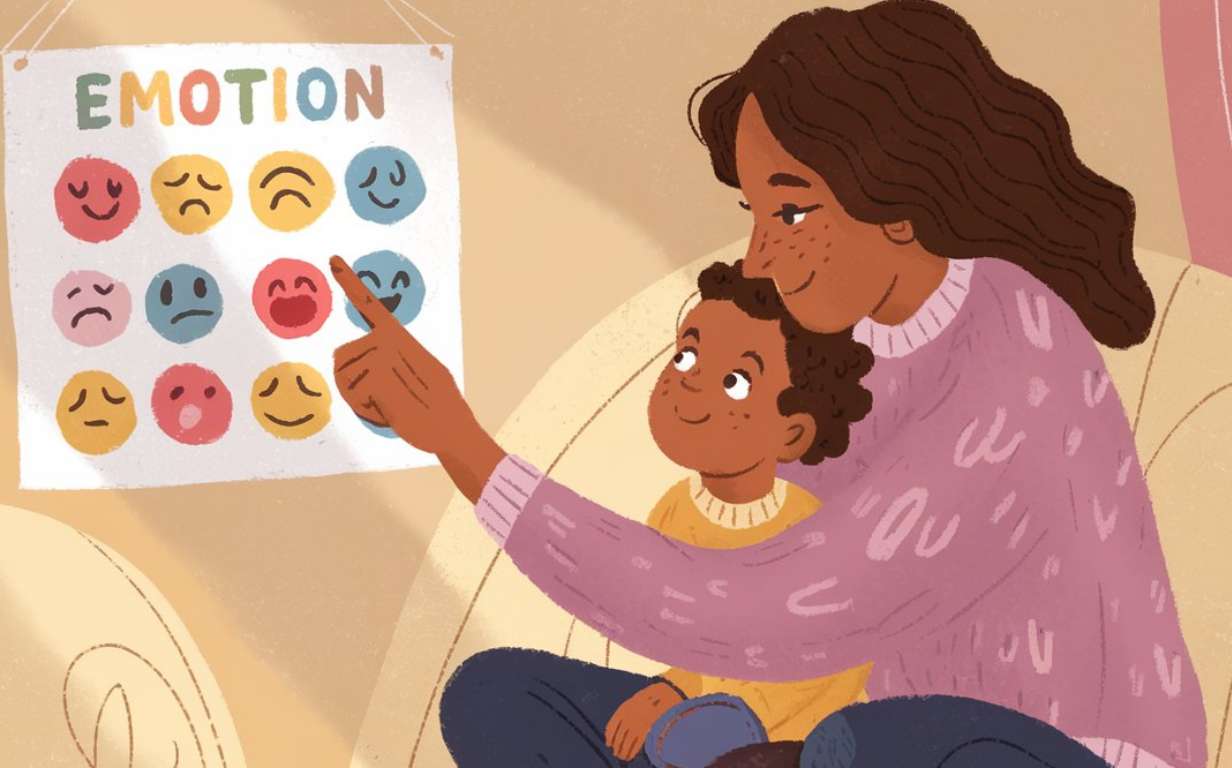As a licensed clinical professional counselor (LCPC), I’ve spent years working with children and families, and I’ve witnessed firsthand the transformative power of emotional vocabulary. Throughout my career, I’ve seen children who could barely name their feelings go on to become emotionally articulate individuals, better equipped to manage conflict, express themselves clearly, and build healthy relationships. It’s not an overstatement to say that teaching a child to talk about their emotions can be a lifelong gift.
One case that comes to mind is that of a 7-year-old boy named Ethan, who struggled with anger outbursts. After working with him over several months, we expanded his emotional vocabulary, helping him move from saying “I’m mad” to “I’m frustrated because I feel left out.” The results were profound. His teachers noticed fewer outbursts, and his parents saw a dramatic improvement in his communication at home. It’s examples like these that fuel my passion for helping children develop their emotional vocabulary.
In this article, I’ll dive into why emotional vocabulary is crucial for a child’s development, drawing on both my professional experience and research-backed strategies. I’ll also share practical tips for parents to nurture this skill, with real-world examples from my work to illustrate how these strategies can be applied effectively.
Key Takeaways:
- Teaching emotional vocabulary enhances children’s emotional intelligence and regulation.
- Parents should model emotional expression to encourage their children to articulate feelings.
- Utilize books, games, and role play to make learning about emotions engaging and fun.
- Daily emotion check-ins promote regular reflection and discussion about feelings.
- Patience and consistency are essential for helping children overcome challenges in expressing their emotions.
In This Article
What Is Emotional Vocabulary?
Emotional vocabulary refers to the words and phrases we use to describe feelings. It’s more than just labeling emotions as “happy” or “sad”—it involves helping children understand more nuanced emotions, such as “disappointed,” “overwhelmed,” or “lonely.” A child with a rich emotional vocabulary has the tools to express how they feel, which can lead to better emotional regulation and social interactions.
In my counseling sessions, I’ve seen the difference between children who have a limited emotional vocabulary and those who don’t. For instance, a little girl named Mia, who struggled with anxiety, often described her feelings as just “scared.” Over time, as we worked together, I introduced new emotional terms like “worried” or “nervous.” As Mia’s vocabulary grew, so did her ability to communicate her feelings. Instead of saying “I’m scared,” she learned to say, “I’m feeling worried because I don’t know what’s going to happen.” This shift allowed her to better understand her emotions and, more importantly, take steps to manage them.
Why Emotional Vocabulary Is Important for Children
Emotional vocabulary supports a child’s overall development, impacting their ability to regulate emotions, build relationships, and succeed in school. Here are some key reasons why it’s essential to focus on developing your child’s emotional vocabulary.

1. Emotional Regulation
When children can label their emotions accurately, they gain control over their reactions. In my counseling practice, I worked with a child named Jake who struggled with frequent tantrums. He knew he was angry but lacked the language to describe what was really bothering him—whether it was frustration, jealousy, or exhaustion. Through emotional vocabulary exercises, Jake learned to pinpoint his feelings more precisely. Instead of exploding in anger, he began to express his frustration verbally, saying things like, “I feel left out when my friends don’t include me in games.”
This aligns with research from UCLA, which shows that labeling emotions helps to reduce activity in the amygdala, the brain’s emotional center. By simply naming their feelings, children like Jake can shift from emotional overwhelm to problem-solving.
2. Mental Health Benefits
Children with a rich emotional vocabulary are less likely to internalize negative emotions. When they can name their feelings, they’re better able to process them, reducing the risk of anxiety or depression later in life. In my work with children facing trauma, I’ve seen how important it is for them to verbalize their emotions. Without that outlet, children often shut down or exhibit behavior problems.
One example is a teenage client who experienced loss at a young age. Initially, she could only express her grief as feeling “sad.” But through therapy, she learned to use terms like “empty,” “heartbroken,” and “lonely.” This helped her process her feelings more deeply and led to a noticeable improvement in her mental health.
How to Teach Emotional Vocabulary to Children
I often tell parents that building emotional vocabulary is like learning a new language—it requires patience, repetition, and modeling. Here are some strategies I’ve found particularly effective in my work.

1. Model Emotional Expression
Children learn best by observing the adults in their lives. I encourage parents to talk openly about their emotions. For example, instead of simply saying “I’m tired,” you might say, “I’m feeling exhausted and frustrated because I didn’t get enough sleep.” This gives your child a more complete picture of your emotions and teaches them how to articulate their own.
In one family I worked with, the parents began doing daily emotional check-ins at dinner, where everyone shared how they were feeling and why. This practice not only strengthened the children’s emotional vocabulary but also deepened the family’s emotional connection.
2. Use Books and Stories
Children’s books are a fantastic tool for introducing new emotions. I’ve often recommended books like The Feelings Book by Todd Parr or When Sophie Gets Angry—Really, Really Angry by Molly Bang. These stories provide children with scenarios where characters experience complex emotions, and they offer a starting point for discussions about feelings.
I remember working with a child named Olivia, who found it difficult to express her anger. After reading When Sophie Gets Angry, we discussed Sophie’s emotions and how they related to Olivia’s experiences. This not only gave Olivia the words to describe her feelings but also helped her realize that it’s okay to feel angry and express it in a healthy way.
3. Daily Emotion Check-Ins
One of the most effective strategies I use with both clients and their families is the “emotion check-in.” Each day, parents ask their children how they’re feeling and why. This simple habit encourages emotional reflection and vocabulary growth.
I’ve seen how powerful this can be in my own practice. One client, a 10-year-old boy named Ryan, began using an “emotion wheel” to identify his feelings each day. Initially, he would choose basic emotions like “happy” or “angry,” but over time, he started selecting more specific terms like “disappointed” or “hopeful.” This daily practice helped Ryan build a strong emotional vocabulary, which significantly improved his emotional regulation.
4. Role Play and Storytelling
In therapy sessions, I often use role-play to help children practice identifying and expressing emotions. For example, we might act out a scenario where a child feels left out at recess, and I’ll encourage the child to describe how they feel and why. This gives them the chance to practice using emotional language in a safe environment.
Parents can try similar exercises at home. One family I worked with created a “feelings puppet show,” where the children used puppets to act out different emotions. This not only made the process fun but also gave the children a creative way to explore and express their feelings.
Stages of Emotional Vocabulary Development
Understanding the stages of emotional vocabulary development can help you guide your child’s growth. Here’s what to expect at different ages:
Ages 2-4: Simple Emotions
At this stage, children are just starting to label basic emotions like “happy,” “sad,” “mad,” and “scared.” A toddler I worked with, Lily, would often use the word “mad” to describe all her negative feelings. Over time, with coaching, she began using more specific words like “frustrated” or “tired.”
Ages 4-6: Expanded Vocabulary
As children approach school age, their emotional vocabulary should begin to expand. They can start using more nuanced words like “jealous,” “proud,” or “nervous.” A preschooler I worked with, Caleb, struggled with feeling nervous about making friends. By introducing words like “shy” and “anxious,” we helped him articulate his fears, which made it easier for him to address them.
Ages 6+: Complex Emotions
By the time children enter elementary school, they should be able to understand and express more complex emotions like “embarrassed,” “overwhelmed,” or “ashamed.” In my work with older children, I’ve seen how expanding emotional vocabulary at this stage can help them navigate the social complexities of school and friendships.
Helping Your Child Express Their Feelings

Even with a growing emotional vocabulary, some children find it difficult to talk about their feelings. Here are some strategies I recommend based on my experience:
1. Validate Their Feelings
Validating your child’s emotions is key. I often remind parents that even if a child’s emotions seem irrational, they are real to them. For instance, I worked with a young boy who would get extremely upset when his favorite toy was taken away. Instead of dismissing his feelings, I encouraged his parents to acknowledge them by saying, “I can see you’re really upset because your toy was taken.”
This simple act of validation can help children feel understood and open the door to more in-depth emotional conversations.
2. Create a Safe Space for Expression
In one of my sessions, a 9-year-old girl named Sophie shared how she felt more comfortable expressing her feelings through art. Her parents set up an “emotion art station” at home, where she could draw or paint how she was feeling. This non-verbal outlet became a powerful way for Sophie to communicate her emotions when words weren’t enough.
Final Thoughts
Helping your child develop a strong emotional vocabulary is one of the most important investments you can make in their future emotional well-being. Through my work with
children and families, I’ve seen firsthand the profound impact this skill can have. Whether it’s a child like Mia learning to express her anxiety more clearly or a family incorporating emotional check-ins into their daily routine, the benefits are clear: children who can name their emotions are better equipped to manage them.
By modeling emotional expression, using tools like books and role play, and creating a safe environment for emotional discussions, parents can help their children build a robust emotional vocabulary. This not only strengthens emotional regulation but also fosters empathy, communication, and mental resilience—all skills that will serve your child well into adulthood.
Remember, as parents, we have the unique privilege of guiding our children’s emotional journey. By giving them the words to express their feelings, we empower them to navigate life’s emotional ups and downs with confidence and clarity.
Disclaimer: The names of clients and identifying details mentioned in this article have been changed to protect their privacy. Any resemblance to real individuals is purely coincidental. All case examples are drawn from the author’s professional experience but have been modified to ensure confidentiality.
